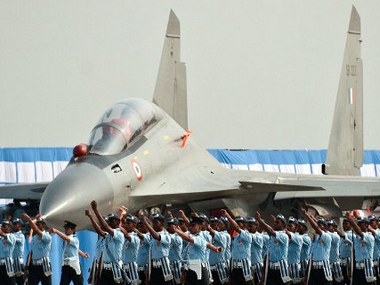In the mid-1990s, during the last days of the PV Narasimha Rao government, a deal to procure Sukhoi aircraft from Russia was signed in something of a hurry. The government of the day made arrangements to expedite payment of $350 million – even though the final price had not been negotiated. At that time, the whiff of a scandal permeated the air, and the BJP-led government that came to power even had the payment investigated. But as it turned out, it was only an advance payment, made at Russian President Boris Yeltsin’s request in somewhat extraordinary – but entirely legitimate – circumstances. The Sukhoi factory (which was in Yeltsin’s electoral constituency) was financially broke, and didn’t even have money to pay salaries to its staff. Yeltsin, who was preparing to face elections, told the Narasimha Rao government that if India could pay the advance on the deal, it would bail out the Sukhoi manufacturer – and help his own election campaign. Narasimha Rao honoured the “political deal between the big boys”, and the $350 million payment was set off against the final price for what has subsequently proven itself to be an incredibly good flying machine. [caption id=“attachment_252747” align=“alignleft” width=“380” caption=“Indian Air Force personnel march past the Sukhoi-30 aircraft. AFP”]  [/caption] When the big boys need their toys, money is no bar. Since that time, India’s weapons acquisition has if anything been ramped up. Just recently, India earned the dubious distinction of becoming the world’s biggest buyer of arms: India accounts for a tenth of all global arms imports, spending about $12.7 billion in weapons during the period from 2007 to 2011. Other countries, including China, spend considerably more on their defence budgets, but far less of this goes towards arms procurement from overseas: indicatively, China procured arms for about $6.3 billion during the same period. In fact, China was the largest arms importer for the period between 2002 and 2006, but has now become a major exporter, largely on account of its successful indigenous arms production programme. Between then and now, the volume of China’s arms exports has virtually doubled. Curiously, China’s weapons indigenisation programme took off about the same time as India was “bailing out” the Russian arms industry with extraordinary payments. In China’s case it happened through the cynical exploitation of scientists from the erstwhile Soviet Union, who were out on a limb after the break-up of the Soviet empire in 1991. In other words, whereas India was subsidising Russian R&D and procuring weapons from it, throwing good money after bad, China milked Russian expertise, and got its weapons indigenisation programme going. Today, China has emerged as the world’s sixth largest arms supplier, close behind the UK. India’s own weapons indigenisation programme has been stuck in platitudes for years. More than a decade after the Indian government ostensibly liberalised the defence industry, by allowing private sector participation (and even FDI investment), the domestic arms industry is tied up in red tape. As strategic analyst Uday Bhaskar observed recently, “The opaque Indian defence production establishment does not produce high-quality clothing and personal inventory items like boots – let alone a suitable rifle for a one million army, or tanks and aircraft.” He points to the “lack of a clear strategic focus” in the defence spending pattern of the last decade – wherein the revenue expenditure (on manpower) accounts for nearly 60 percent of the budget, leaving a disproportionately smaller share for capital expenditure (on, for instance, acquisition of new equipment and inventory items and modernisation of existing platforms). The armed services are in desperate need of modernisation of critical equipment, but it is being held hostage to the Defence Procurement Procedures, which, experts say, have tied the hands of the government. Some of this springs from what Jamshyd N Godrej called Defence Minister AK Antony’s distrust of the private sector, which inhibits him from giving private companies more room in defence production. As someone who hails from a State with strong roots in Communism, Antony is, according to Godrej, “very suspicious of the private sector” – and is happy to source rather from the public sector. So, although Indian companies stand ready to participate more fully in weapons production, they are for now only bit layers, working on peripheral subsystems. Effectively, this increases India’s reliance on imports, which today account for 70 percent of weapons procurement. It’s not just about costs: dependence on imports makes for greater delay in inducting them. It is this that has propelled India to the top of the charts of leading arms importers. We effectively end up bailing out foreign arms makers and subsidising their R&D efforts when an earnest indigenisation programme would have cut costs and delays – and created the space for domestic firms to fill the vacuum. That’s about as muddled as policies can get.
But why do we end up subsidising foreign arms makers, when an earnest indigenisation programme can save us money and time?
Advertisement
End of Article
Written by Vembu
Venky Vembu attained his first Fifteen Minutes of Fame in 1984, on the threshold of his career, when paparazzi pictures of him with Maneka Gandhi were splashed in the world media under the mischievous tag ‘International Affairs’. But that’s a story he’s saving up for his memoirs… Over 25 years, Venky worked in The Indian Express, Frontline newsmagazine, Outlook Money and DNA, before joining FirstPost ahead of its launch. Additionally, he has been published, at various times, in, among other publications, The Times of India, Hindustan Times, Outlook, and Outlook Traveller. see more


)
)
)
)
)
)
)
)
)



